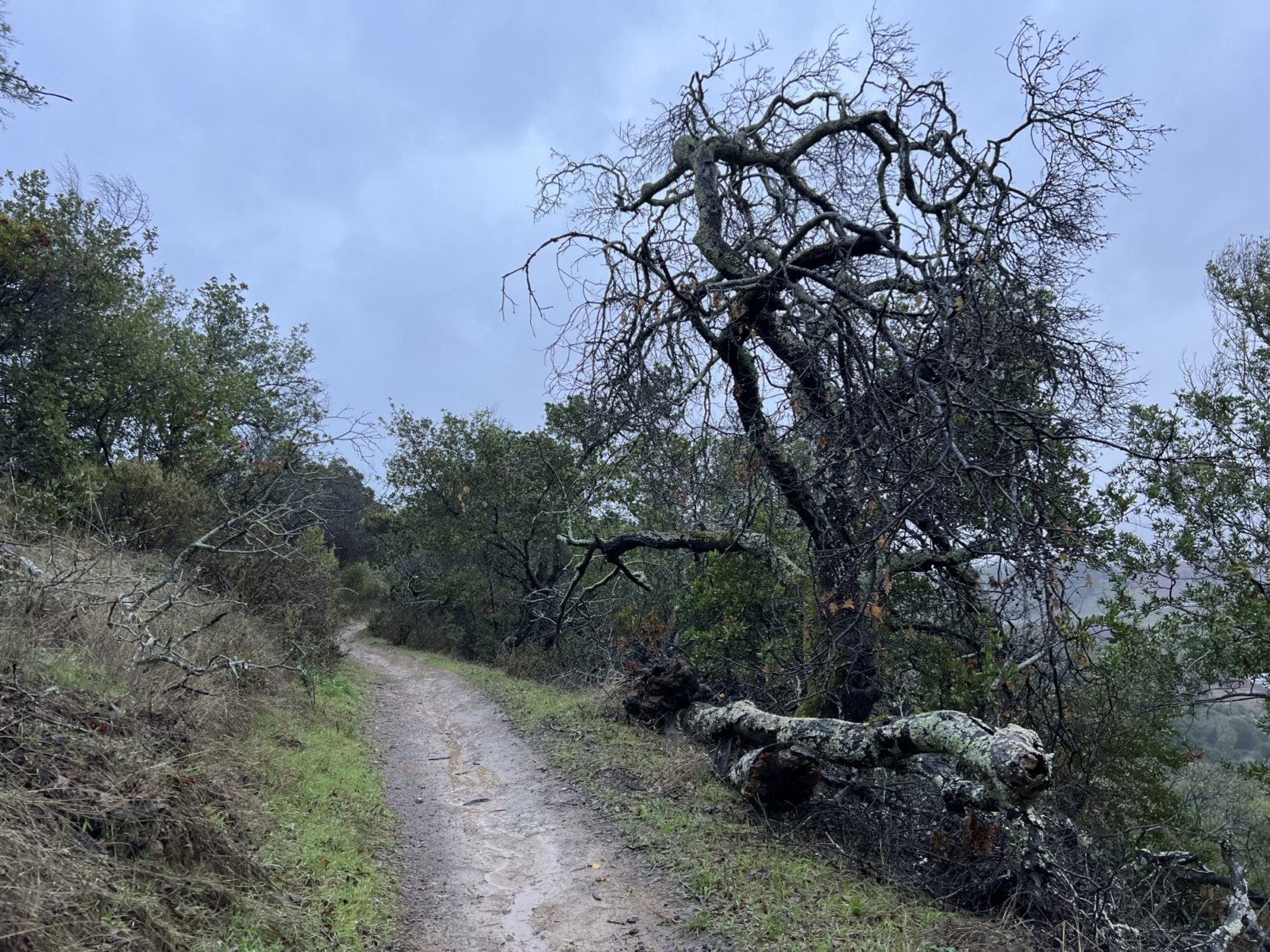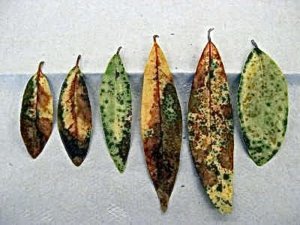
Tracking sudden oak death
Volunteers and an app are helping scientists map this devastating disease
The impacts of sudden oak death are all too visible at China Camp, as once towering California live oaks fail and die, their leafless limbs and desiccated trunks crumbling to the ground. These stricken trees keep Friends of China Camp’s maintenance volunteers and staff busy, clearing trails of fallen limbs and making sure no dead or dying trees pose safety risks.
Since it was first detected in Northern California in the late 1980s, sudden oak death (SOD) has run rampant in the region. In severely impacted coastal counties such as Marin, researchers note that alarming numbers of coast live oaks (Quercus agrifolia) and black oaks (Quercus kelloggii) have been dying of SOD. A staggering 80 percent of tanoaks (Lithocarpus densiflorus), a small understory tree and one of the hardest hit species, have also perished due to SOD.
“This is the worst plant pandemic in the world right now,” says Dr. Matteo Garbelotto of U.C. Berkeley’s Forest Pathology and Mycology Lab. “We are losing entire populations of live oaks, a keystone species that’s incredibly important to our ecosystems, and tanoaks might actually go extinct.”
Volunteers and an app to the rescue
In recent years, throngs of “citizen scientists”—basically concerned individuals—have been submitting data that helps researchers track the disease’s spread and severity.
Information from these so-called “SOD-blitz” teams, overseen by U.C. Berkeley researchers and SOD experts, is then used to create detailed local maps that show SOD distribution and the risk of SOD infection in a given area. These maps can then be accessed by anyone who has downloaded the free SODMAP Mobile App.
In the late 1980s, SOD was accidentally introduced into Northern California, most likely hitching a ride on ornamental plants from Asia. Since then, SOD has killed hundreds of thousands of Northern California’s native oak and tanoak trees. The disease’s microscopic pathogen called Phytophthora ramorum. Researchers have discovered that the main SOD spreaders aren’t oaks, but California bay laurel trees. An SOD-infected bay acts like a “Typhoid Mary” in the forest, carrying and spreading the deadly disease in its infected foliage without being killed itself.

How does SOD spread? In the forest, it typically happens during relatively warm, rainy periods (think spring here in NorCal). Raindrops slide down infected bay leaves and pick up the pathogen. This pathogen-infested raindrop then falls to the ground, where it can infect and kill nearby vulnerable species.
Dr. Garbelotto notes that SOD Phytopthera pathogen now has different variants—much like morphing versions of the COVID virus. “Variants are now infecting and killing other species, such as native manzanitas.”
Latest SOD blitz leaf collections didn’t pick up active SOD pathogens in northern Marin, Sonoma, and Napa. Unfortunately, it was still widely detected rampant southern Marin (including our region). Scientists believe this is likely due to the current mega-drought muting the SOD spread in dryer areas, while southern Marin’s cooler, wetter temperatures continue to promote the spread of the disease.
Blitz volunteers make a big difference
While “citizen science” from the SOD-Blitz can’t stop the disease, data submitted by volunteers helps track SOD’s spread and severity. In 2022’s blitz, volunteers covered some 149,000 acres in 18 counties, submitting a staggering 20,000 samples.
“We’d never have the money to hire hundreds of scientists to do the work our volunteers do,” says Dr. Garbelotto. “We couldn’t do the research without them.”
SOD-Blitz volunteers use specific criteria to look for leaves from suspicious bay trees. Researchers then analyze samples to track the disease, then create regional risk maps which are uploaded to the SODMAP app.
Friends of China Camp aims to be part of the 2023 SOD-Blitz, slated for spring. Stay tuned for announcements! For additional information about this important program, go here.
For an informative look at sudden oak death in nearby Point Reyes National Seashore, watch this video.—by FOCC volunteer Harriot Manley

